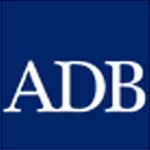India is all set to overtake China's growth rate by clocking 7.8 per cent GDP in 2015-16 and 8.2 per cent during the following fiscal on the back of structural reforms and government's "pro-investment" attitude, Asian Development Bank said on Tuesday.
"India is expected to grow faster than China in the next few years," ADB Chief Economist Shang-Jin Wei said while releasing the bank's annual publication Asian Development Outlook, 2015.
Indian government's pro-investment attitude, improvement in the fiscal as well as current account deficit situation, and some forward movement on resolving structural bottlenecks have helped improve the business climate, making India attractive again to both domestic and foreign investors, he added.
ADB expects India's growth to accelerate to 7.8 per cent in 2015-16 and further to 8.2 per cent in 2016-17. In case of China, the GDP is expected to decelerate to 7.2 per cent in 2015 and 7 per cent a year after.
In the current fiscal, both the economies are expected to clock a 7.4 per cent growth rate.
The Indian government however, expects the growth rate to accelerate from 7.4 per cent to 8-8.5 per cent in 2015-16. The International Monetary Fund (IMF) has projected a growth rate of 7.5 per cent for next fiscal.
India, the ADB report said, would drive the economic growth of Emerging Asian economies, as Asia's largest economy China will continue its moderate deceleration in 2015 and 2016 as the government proceeds with its structural reform agenda and fixed asset investment slows.
Shang, however, cautioned that although India's economic prospects look promising, "there are still many?challenges".
As regards inflation, the ADB said inflation in 2015-16 at 5 per cent, but may rise to 5.5 per cent in 2016-17.
"We expect little bit monetary easing (of interest rates by the RBI)... A benign inflation outlook would serve to help monetary policy support growth," ADB Senior Economics Officer, Abhijit Sen Gupta said.
Strong growth outlook is contingent on further acceleration in investment activity, ADB said, adding that the prospects look promising.
When asked about the new base year of 2011-12 adopted by the Central Statistical Organisation (CSO) for computing national income, Sen Gupta said: "We are still trying to understand what the new GDP numbers mean".
Praising India's 'Make In India' campaign to boost domestic manufacturing, Shang said: "Indian government's? programme is even more striking (in comparison to China)".
As regards the external sector, he said: "India is in a stronger position today than what it used to be. Government is making effort to increase FDI?to deal with financial instability."
ADB said government measures, including accelerating environment clearances for infrastructure projects, easing the land acquisition hurdles, coal mines auctioning, and easing of labour laws compliance would help boost growth.
"FDI inflows are likely to increase on better growth prospects, liberalised ceilings, and the government's focus on improving the ease of doing business and other enabling policies under the Make in India programme," Sen Gupta said.
The ADB said that India's most pressing policy challenges is to promote cities as engines of economic growth and jobs.
"To fully reap the benefits of urbanisation, the government must make further efforts to coordinate urban? and industry planning to attract industries into cities, and provide the necessary supporting infrastructure," it?said.
As regards the new monetary policy framework, under which the RBI's primary objective would be to target inflation, the ADB said it would help in restraining inflation and?improve the coordination between monetary and fiscal policy.
With regard to Rs 69,500 crore PSU stake sale target, Sen Gupta said the "disinvestment target of 0.5 per cent of GDP could be tad ambitious".
The current account deficit in 2015-16 is expected to be equal to 1.1 per cent of GDP, he added.





